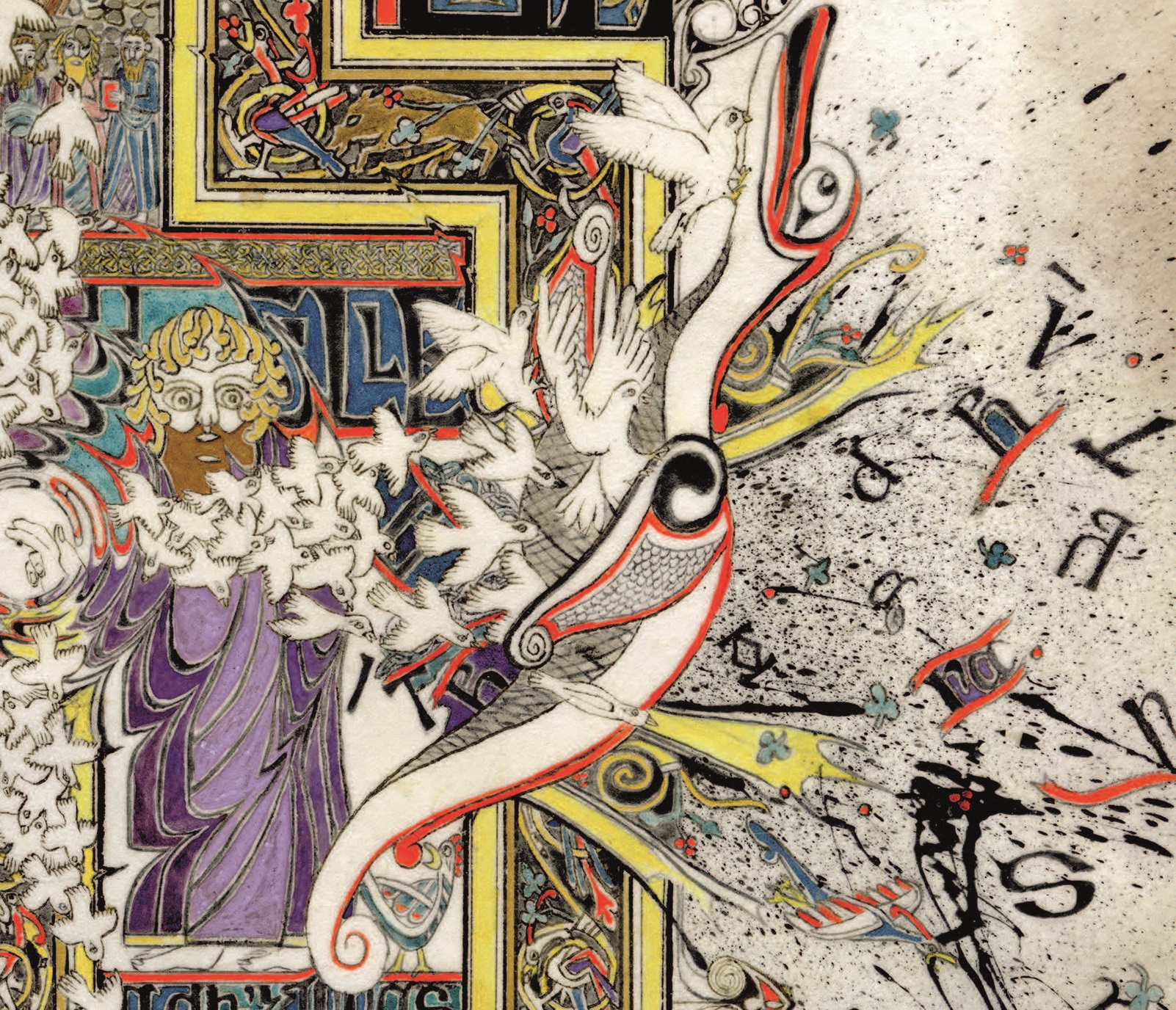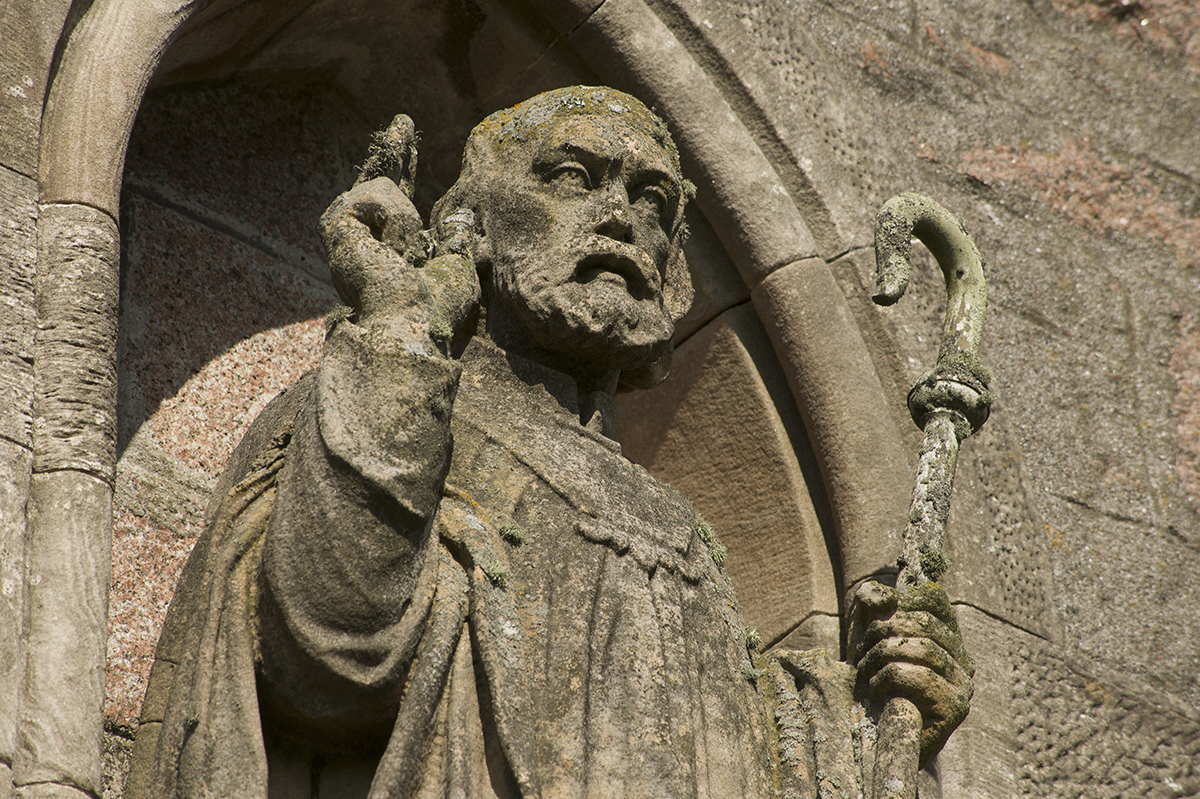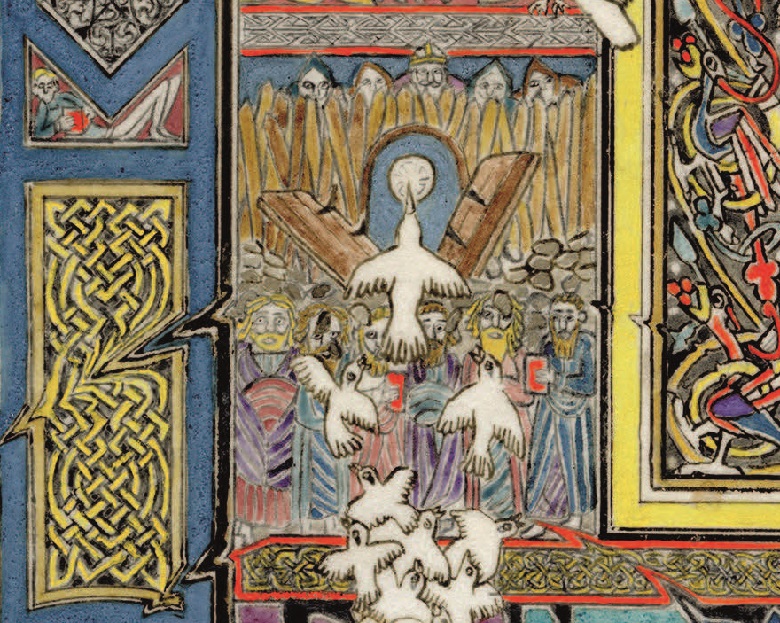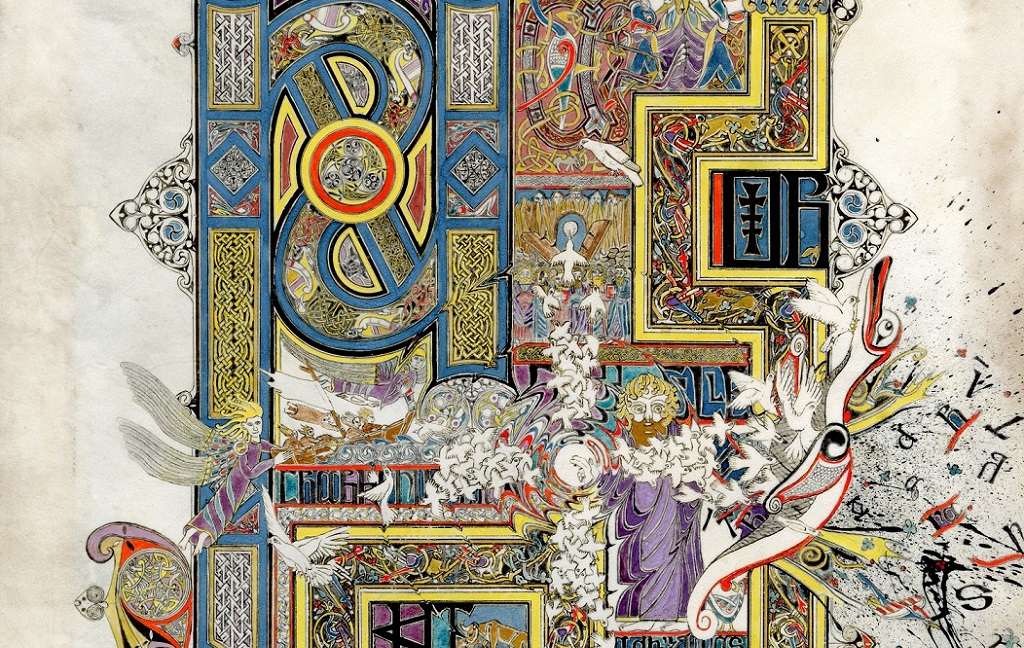Saint Colmcille, also known as Saint Columba, is said to have encountered the Loch Ness monster, battled with Pictish druids and performed miracles as he travelled into Scotland, preaching Christianity.
Some 1500 years later, these legends inspired Calumcille ann an Alba, a new artwork created by Master Craftsman Thomas Keyes. On display at Tarbat Discovery Centre as part of a project funded by the National Lottery Heritage Fund, it’s been produced using the styles and materials that monks would have used in the monasteries Columba founded. We last blogged about Thomas’ unique work back in 2022, and you can get a flavour of his latest project below.

The folio Calumcille ann an Alba which is on display at the Tarbat Discovery Centre
The first encounter with Nessie?
Born near Derry in Northern Ireland in 521 AD, Colmcille became a monk at a young age and studied with some of the holiest men in Ireland. Some sources say that he was implicated as one of the instigators of a battle in which some 3,000 men were killed. As penance, he voluntarily left Ireland and exiled himself. In any case, he settled on the Isle of Iona, where he founded a monastery in 563 AD.

Iona Abbey
From Iona, he set out to convert the Picts (groups of people who lived in northern Scotland from about 300 AD to 900 AD) to Christianity. One of his many missions involved a trip up Scotland’s Great Glen along Loch Ness.
On the way, he is said to have met some local Picts whose friend had just been killed by a ferocious water beast. The story goes that Colmcille ordered a monk to swim across the loch to fetch a dingy so that he and his party could cross the water, but the swimmer drew the attention of the beast. It reared up out of the water to attack the monk.

Colmcille’s legendary meeting with the sea beast as depicted in Calumcille ann an Alba
According to legend, Colmcille calmly made the sign of the cross and ordered the beast to return to its home. The beast immediately flew back as if pulled by ropes. This episode is thought to be the first recorded sighting of a monster in Loch Ness. Pictish stone carvings often depict a strange unidentified beast that looks as if it could live in water. Could these be the first images of Nessie?
Miracles at the Fortress

A statue of Colmcille at Iona
Another myth tells of Colmcille visiting the fortress of a Pictish king, Bruiya, at the top of Loch Ness. He and his monks walked up to the fortres but the guards refused to open the big wooden gates. Legend has it that Colmcille made the sign of the cross, whereupon the gates flew open to allow him to enter.
The king was impressed and invited Colmcille to stay, but his druids were not happy. When Colmcille’s monks began to sing psalms, the druids tried to stop them with a magic spell. In response, the monks’ singing only grew louder until the fortress began to shake.

The fortress gates open in response to Colmcille
By the time Colmcille and the monks were ready to leave, the druids were exhausted by them. They decided to put another spell on them. The used their magic to create a strong wind that blew against the direction Colmcille and the monks intended to sail.
Colmcille ordered his monks to raise the sails into the wind anyway and made the sign of the cross, after which they sailed off at speed against the wind.

Colmcille’s ship forces its way through the stormy waters
Preserving the tales
These and many other stories of Colmcille’s life have been preserved both orally and in writing in Gaelic culture for nearly 1500 years. Much of what we know of him comes from the Vitae Columbae. This was written by Adomnán of Iona, albeit roughly a century after his death.
Colmcille founded many monasteries with later generations of monks making some of the most beautiful, complex books ever created. They used parchment from calf skin and pigments from local plants and minerals. These extraordinary works include the Book of Durrow and the Book of Kells, which may have been produced in Scotland, possibly even in Portmahomack.
Centuries later, it’s these works, materials and methods that are inspiring Thomas Keyes.
See Calumcille ann an Alba
Calumcille ann an Alba is part the Stories on Skins project, made possible by the National Lottery Heritage Fund.
It’s on display at the Tarbat Discovery Centre in Portmahomack, Scotland. A wee gem of a museum, it’s located on the site of an 8th century Pictish monastery. The monastery may well have been established by one of Colmcille’s successors.
Along with a Stories on Skins exhibition, the Discovery Centre hosts complementary artworks and events. They include lectures, Gaelic storytelling sessions, craft workshops and foraging expeditions.
Meanwhile, for more saintly stories, you can discover the saints that made Scotland. Alternatively, take a virtual day out to Iona Abbey!

